Arthur Wardle.
English ( b.1864 - d.1949 ).
Welsh Hounds from The Packs Of Lieutenant Buckley & The Hon. H.C. Wynn.
Watercolour.
Signed Lower Left.
Image size 7.68 inches x 10.83 inches ( 19.5cm x 27.5cm ).
Frame size 15.35 inches x 18.11 inches ( 39cm x 46cm ).
This original painting is by the highly successful artist Arthur Wardle and dates from 1900.
The watercolour is presented and supplied in a sympathetic contemporary frame (which is shown in these photographs), mounted using conservation materials and behind non-reflective Tru Vue UltraVue® UV70 glass.
This antique painting is in very good condition, commensurate with its age. It wants for nothing and is supplied ready to hang and display.
The watercolour is signed lower left.
Arthur Wardle was a highly successful artist whose works continue to be sought after and have been widely reproduced on postcards, books, cigarette cards, calendars and even boxes of chocolates. He also produced the famous WW1 recruitment poster ‘The Empire needs Men!’. He was largely self-taught and received no academic training, yet became one of the pre-eminent animal and sporting painters of his generation. He is particularly well-known for his paintings of dogs.
Born in London, Wardle was just sixteen when he had his first piece displayed at the Royal Academy. This was a study of cattle by the River Thames, and was a good indication of what was to be a lifelong interest in painting animals.
He painted a variety of animal subjects with equal skill but his work may be divided into mythical, domestic and exotic. He visited London zoo regularly where he would tirelessly sketch on the spot studies of exotic animals and birds from overseas, such as elephants, leopards, polar bears and tigers, and these would prove highly inspirational and significant subjects for his large mythological scenes, which basically sealed his reputation as an outstanding animal artist as well as a painter of historical subjects. His sporting scenes are now particularly valued. He is considered equally proficient in oils, watercolours and pastels.
In 1880 Wardle lived in Oakley Square, Camden, but artistic success enabled him to move to the more fashionable 34 Alma Square in St John's Wood by 1892. By 1936 Wardle had moved to West London.
Wardle was elected to the Pastel Society in 1911 and became a member of the Royal Institute of Painters in Water Colours in 1922. In 1931 he held his first one-man exhibition at the Fine Art Society and in 1935 the Vicar’s Gallery put on an exhibition of his work. He exhibited 21 works at the Royal Academy from 1880-1935, and more than 100 up to 1936. He also exhibited at the other principal British galleries and in Paris.
Wardle undertook many commissions for owners of pure bred dogs. Among Wardle’s best-known dog paintings are those he completed for the owner of the famous d’Orsay Smooth Fox Terrier Kennels, Mr. Francis Redmond. The famous original version of the painting, entitled The Totteridge Eleven hangs in the London offices of The Kennel Club, and another version may be seen in America at the offices of The American Kennel Club.
Today Wardle is represented in several public collections including the Chantry Bequest, The Tate, the National Gallery of British Art and the Leeds City Art Gallery.
Mr H.C. Wyn lived on the Rhug Estate near Corwen, Merioneth (now Denbighshire).
Lieutenant Edmund Maurice Buckley lived near Newtown, Montgomeryshire (now Powys). Lieutenant Buckley was the only son of Sir Edmund Buckley Bart, Baronet of Mawddwy and Conservative MP.
This excerpt can be found in the book “A History and of the Modern Dogs of Great Britain and Ireland -Sporting Division” by Rawdon Briggs Lee, illustrated by Wardle, first published in 1897.
Chapter VII – Welsh Hounds - “These hounds are excellent types of their family, and Mr. Wardle's drawing conveys better than words can, what an old-fashioned, wire-haired, Welsh hound is like. Mr. Buckley says he finds his couple or so "useful for otter hunting, as they take the water well, and do not seem to feel the cold so much as otter hounds, because their coats dry sooner than the longer ones of the latter when coming out of the water. They show extreme delicacy of nose in picking up and working out a cold drag; but their voices are very poor and their note quite commonplace as compared with the melodious otter hound."
This original watercolour depicts a classic Victorian hunting dog scene; part of a pack of hunting Welsh hounds set with a backdrop of Welsh mountains in the distance across open countryside. There is a green grassy plain in the foreground with three hounds in a natural pose; in the distance there are mountains (possibly The Berwyn Mountains). The countryside is realistic and brooding with an expansive open sky in greys and pale blues. The hounds are relaxed and calm in each other’s presence.
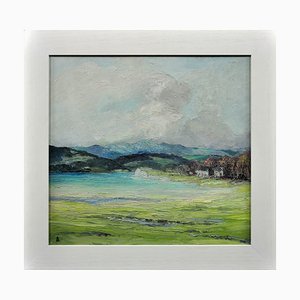
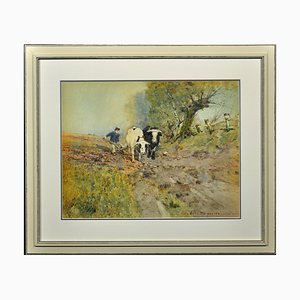
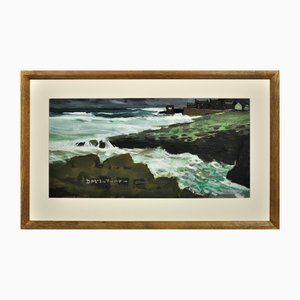
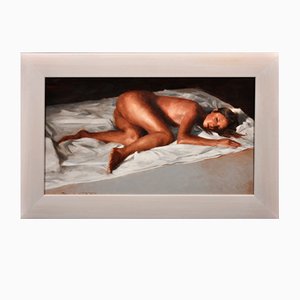
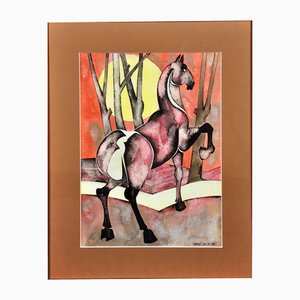

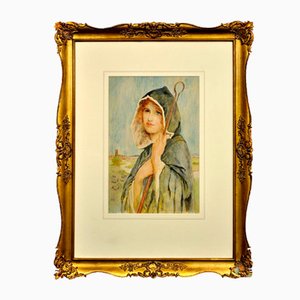
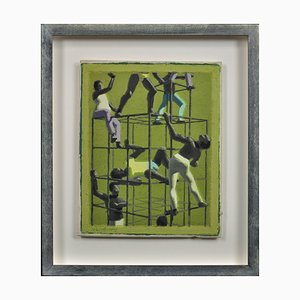

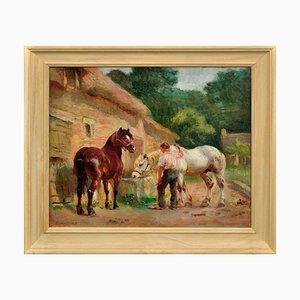
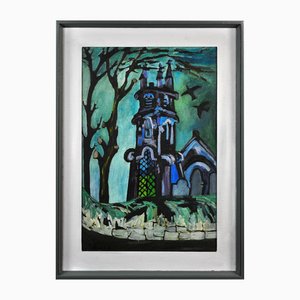


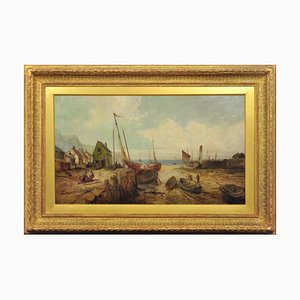

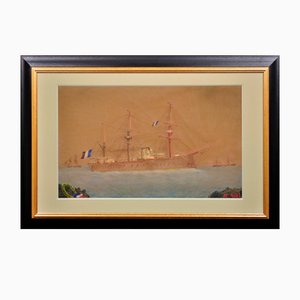
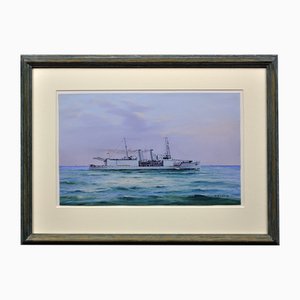
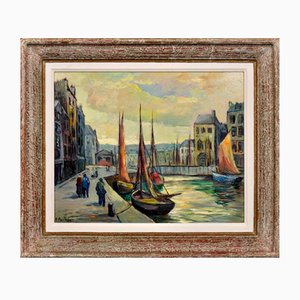
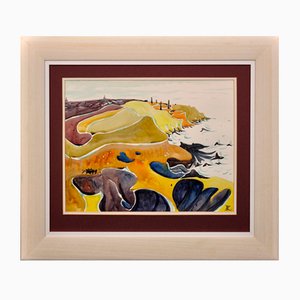
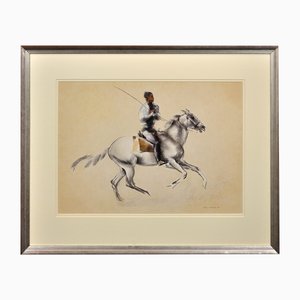
Get in Touch
Make An Offer
We noticed you are new to Pamono!
Please accept the Terms & Conditions and Privacy Policy
Get in Touch
Make An Offer
Almost There!
To follow your conversation on the platform, please complete the registration. To proceed with your offer on the platform, please complete the registration.Successful
Thanks for your inquiry, someone from our team will be in touch shortly
If you are a Design Professional, please apply here to get the benefits of the Pamono Trade Program